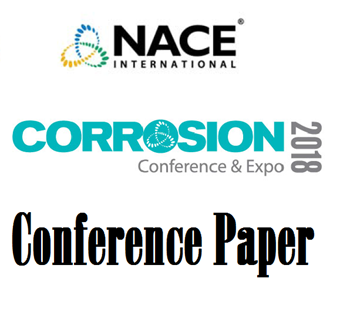Search
Corrosion Monitoring and Control
View as
Sort by
Display
per page
51318-10967-Effect of Temperature and Pressure on the Performance of Corrosion Resistant Alloy (CRA) Coatings in
Product Number:
51318-10967-SG
Publication Date:
2018
$20.00
51318-10969-Qualification of Scale Dissolver Acid Systems for 3CR Alloyed Steel and 13CR Stainless Steels Well Materials
Product Number:
51318-10969-SG
Publication Date:
2018
$20.00
51318-10970-Performance of API 5L X65 in a 'sweet' followed by 'sour' environment
Product Number:
51318-10970-SG
Publication Date:
2018
$20.00
51318-10977- Effect of Charging Method on the Evaluation of HE Susceptibility for High-strength Stru
Product Number:
51318-10977-SG
Publication Date:
2018
$20.00
51318-11009-Coating System to Mitigate Against Hydrogen Cracking in Gas Dehydration Unit
Product Number:
51318-11009-SG
Publication Date:
2018
$20.00
51318-11023-Effect of Soil and Disbondment Configuration on CP Penetration into Coating Disbondment
Product Number:
51318-11023-SG
Publication Date:
2018
$20.00
51318-11059- Review of a UNS N04400 Heat Exchanger Tube Failure in Cooling Water Service
Product Number:
51318-11059-SG
Publication Date:
2018
$20.00
51318-11064-Application of Indirect Condition Assessment Techniques for Buried Water Pipelines: A Case Study
Product Number:
51318-11064-SG
Publication Date:
2018
$20.00
51318-11065-On-line Real Time Electrochemical Corrosion Monitoring in Low Conductive Fluids – Sulfolane Aromatic Extraction
Product Number:
51318-11065-SG
Publication Date:
2018
$20.00
51318-11087-Corrosion Behavior of Additively Manufactured Alloy N06210 in acidic solutions
Product Number:
51318-11087-SG
Publication Date:
2018
$20.00
51318-11116-Anodic and chemical oxidation to improve localized corrosion resistance of pure titanium
Product Number:
51318-11116-SG
Publication Date:
2018
$20.00












